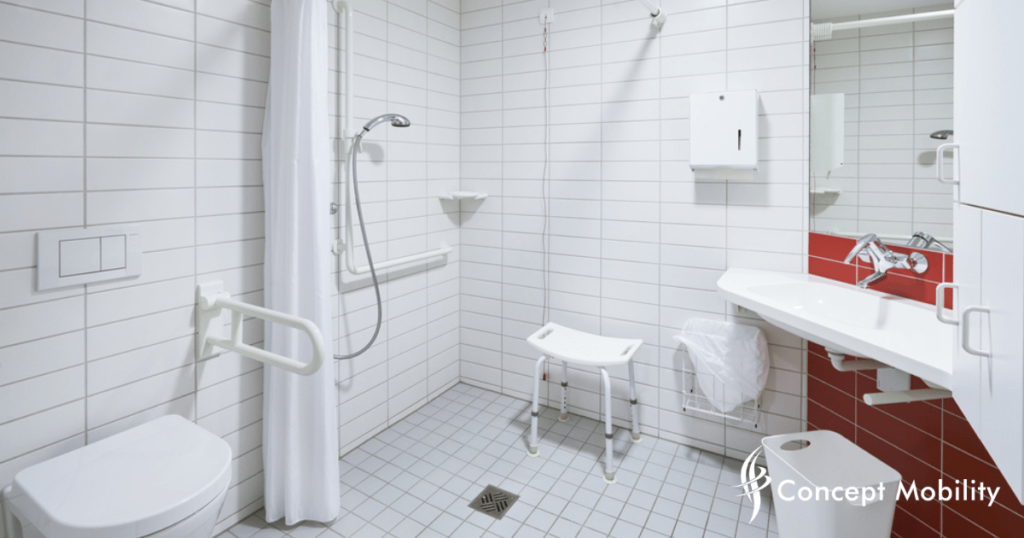
Elegant adaptability: Designing Luxurious Wet Rooms for Disabled Individuals
In recent years, the trend of wet rooms has become increasingly popular due to their sleek and contemporary design. Wet rooms offer a seamless and open-plan bathroom experience, unlike standard bathrooms with separate shower enclosures. With waterproof flooring and walls, wet rooms provide a vast and versatile bathing area. While exploring the attractiveness of wet rooms for disabled and how they respond to the specific needs of disabled people, the use of high-quality materials is another defining feature of designer disabled bathrooms
Importance of Design Accessibility
Accessibility is a crucial factor in modern design, as it ensures that people of all ages and abilities can use environments. For disabled individuals, accessibility elements are essential to maintaining independence and improving their quality of life. By incorporating accessibility into wet rooms design, you can create beautiful spaces that cater to everyone’s needs.
Challenges for Disabled Individuals
In typical bathroom settings, disabled people frequently face issues such as navigating tight doorways, moving around obstructions, and safely accessing bathing amenities. These impediments can make routine chores challenging, leading to feelings of frustration and loneliness. Designing wet rooms for disabled with accessibility in mind overcomes these problems while promoting independence and dignity for disabled people.
Limited movement
Many disabled people struggle with limited movement, making it difficult to enter narrow spaces, manoeuvre around obstructions, or reach certain restroom facilities.
Lack of accessibility
Traditional bathroom designs often lack accessibility features such as grab bars, handrails, and ramps, making it challenging for disabled individuals to use the facilities independently.
Bathing difficulty
Bathing can be very difficult for disabled people, particularly those who have mobility issues. Limited access to shower or bath lifts facilities, slippery flooring, and insufficient support can all pose safety hazards and make bathing difficult.
Entry barrier
Narrow entrances and high thresholds can be a barrier to entry for wheelchair users or people using mobility aids, making it difficult for them to enter and depart the restroom.
Insufficient space
Bathroom layouts that are too cramped or poorly planned might make it difficult for disabled people to move about and reach necessary fixtures and amenities.
Lack of Adaptability
Many toilets are not constructed to be adaptable, making it difficult to accommodate disabled people’s changing needs over time. Users may feel frustrated and uncomfortable as a result of the lack of flexibility.
Privacy Issues
Some disabled people may have privacy problems in toilets due to the need for help or a lack of suitable privacy elements such as barriers or curtains.
Emotional Effect
Challenges faced daily can negatively impact the emotional well-being of disabled individuals, leading to feelings of frustration, isolation, and lowered self-confidence.
Integrating Accessibility and Elegance
The secret to constructing comfortable wet rooms for disabled individuals is to integrate accessibility features with exquisite design elements. By prioritising both functionality and aesthetics, it is possible to create places that are beautiful and functional, thus improving the whole bathroom experience.
Design Elements for Luxurious Wet Rooms
Non-slip Flooring
It is essential to have non-slip flooring in wet rooms to prevent falls, especially for those with mobility issues. Textured tiles or anti-slip coatings can provide traction without compromising on appearance.
Grab Bars and Handrails
Grab bars and handrails are critical accessibility features that assist and stabilise impaired people when entering, departing, or moving around the disabled wet room. These fixtures can be seamlessly integrated into the design without detracting from the overall attractiveness of the room.
Wheelchair Accessibility
Wheelchair users must have adequate space and manoeuvrability in the wet room. Wide entrances, open layouts, and barrier-free shower spaces enable mobility aids and provide simple access to bathing areas.
Adjustable Shower Controls
Adjustable shower controls are useful for people with limited dexterity or reach. Lever-style handles or touch-sensitive controls make it easy to change water temperature and flow, which improves the user experience for people with disabilities.
Stylish Fitting and Finishes
Stylish fixtures and finishes provide a touch of elegance while designing luxurious wet rooms, increasing the overall aesthetic appeal of the space. High-quality finishes like brushed nickel, chrome, or matte black give a classy and timeless appearance that matches any design style.
Colour palette and texture
Lighting is an important aspect of wet room design since it provides both practicality and ambience. Task lighting is strategically placed to illuminate critical areas such as the walk in shower and vanity, whereas ambient lighting produces a warm and inviting atmosphere. A neutral colour scheme with splashes of colour or contrast adds visual appeal while conveying a sense of wealth and sophistication.
Combining the useful and aesthetic design of wet rooms for the disabled
Luxury bathrooms and wet rooms for people with mobility issues are designed with elegance and accessibility in mind perfectly combining usefulness and aesthetics. By including accessibility features like non-slip flooring, grab bars, and wheelchair accessibility in the design, it is possible to create an environment that is both beautiful and inclusive, improving the bathing experience for everyone.


